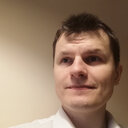
Krzysztof CzyżLukasiewicz Research Network – PORT Polish Center for Technology Development · Photonics and Electronics area
Krzysztof Czyż
Doctor of Engineering
About
18
Publications
3,927
Reads
How we measure 'reads'
A 'read' is counted each time someone views a publication summary (such as the title, abstract, and list of authors), clicks on a figure, or views or downloads the full-text. Learn more
58
Citations
Introduction
In my work I deal with the use of laser radiation in the form of picosecond pulses for the removal of thin layers, cutting and structuring. I also try to change the properties of materials in accordance with my predictions, such as changing their wetting state, changing their absorption or reflection properties.
Additional affiliations
Education
September 2013 - January 2018
September 2008 - January 2012
Publications
Publications (18)
The influence of Q-switched pulsed Nd:YAG laser interference heating, using 120 mJ of pulse energy and a variable number of consecutive pulses, on the microstructure and magnetic properties of amorphous Fe80Si11B9 alloy was examined. Microstructural analysis, using light, scanning and transmission electron microscopy, was complemented by results of...
Detailed studies on the effects of pulsed laser interference heating (PLIH) on surface characteristics and subsurface microstructure of amorphous Fe80Si11B9 alloy are reported. Laser interference heating, with relatively low pulsed laser energy (90 and 120 mJ), but with a variable number (from 50-500) of consecutive laser pulses permitted to get en...
Spectral investigations in the UV-VIS range of selected Al alloys and composites, used in the construction of armament components as well as drones, were performed using the LIBS technique. Two Nd:YAG lasers were applied: a short pulse 4ns 60mJ laser and a long pulse 200/400 (up to 1000)µs (~ 2/4 up to 10J) laser. In experiments with a short laser...
The main problem connected with crystallization of amorphous magnetic materials from the FeSiB(X) group is the increase of their fragility with an increasing content of the crystalline phase. To overcome this defect the possibilities offered by the interference, pulse laser heating of FeSiB ribbons were utilized. A simple interference prismatic sys...
The paper presents the results of research on modern laser micromachining technology based on utilization of the interference field of high energy, pulse laser beams. The influence of radiation polarization on a pattern shape in an interference image has been analyzed theoretically. Values of laser ablation threshold for titanium and diamond-like c...
Laser radiation is used, among others, for surface treatment of various materials. At the Institute of Optoelectronics, under the direction of the late Professor Jan Marczak, a number of works in the field of laser materials processing were performed. Among them special recognition deserves flagship work of Professor Jan Marczak: implementation in...
The direct laser interference lithography, based on bi-prism, tetragonal pyramid and an axicon was used as a tool for periodical structuring of different bioscaffolds. The simple, source laser system with stable Nd:YAG laser resonator, amplifying system (energy up to 1 J) and prism-based interferometer optics gave possibility to create periodical,...
Laser based surface structuring methods are among the fastest growing techniques and displace other surface treatments for applications such as marking, change of topography and microstructure. Such changes may lead to controlled modification of material properties, including their biocompatibility. The paper presents two laser techniques — picosec...
This paper presents the results of annual measurements of the corrosion progress at test samples of cast iron and carbon steel placed in different natural environments. Comparative tests were performed in two outdoor stations, one at the Railway Museum in central Warsaw and one at the location of a Railway Museum in the small town of Sochaczew, 50...
The paper presents experimentally fabricated periodical structures, in a micro-and submicro scale, at surfaces of selected biocompatible materials – Titanium alloys and amorphous carbon (DLC). Surface structuring of these materials has been performed using direct laser interference lithography method. It resulted in the creation of 1 D and 2 D patt...
A dual-channel laser system consisting of an Nd:YAG generator with Q - modulation and a "p - branch" type unstable resonator has been presented in the article. The laser assembly has been configured in such a way as to constitute the arms of a Mach-Zehnder interferometer. The regulation of the amplification coefficient in both amplifying channels a...
Seeding of cells on functional, biocompatible scaffolds is a crucial step in achieving the desired engineered tissue. The authors show the constructional solutions of the Nd:YAG pulse laser system with the Q-switch modulation for direct and interferential shaping of the surface of biocompatible materials. The two-channel interference system is dist...




























































